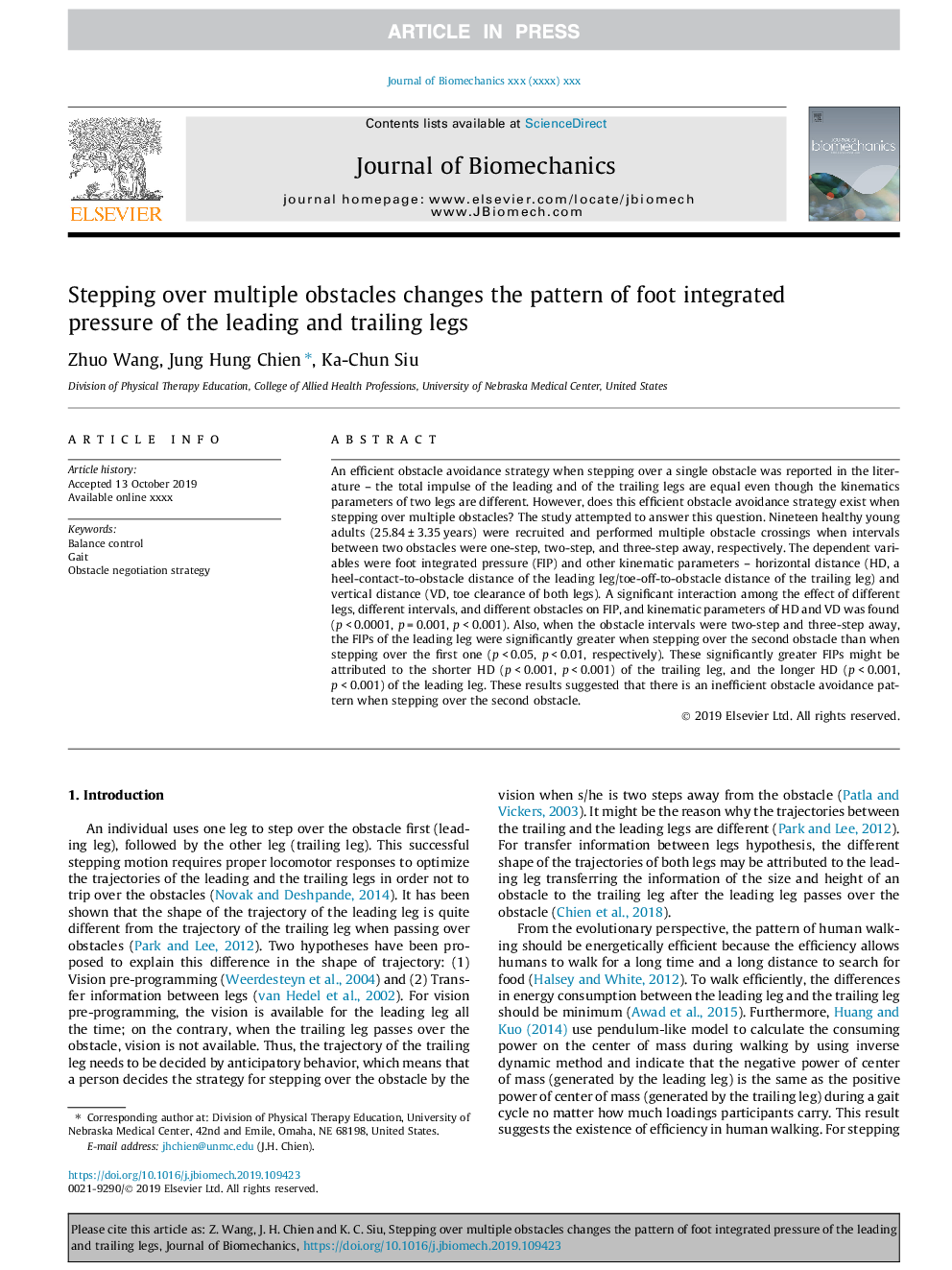| Article ID | Journal | Published Year | Pages | File Type |
|---|---|---|---|---|
| 13455521 | Journal of Biomechanics | 2020 | 8 Pages |
Abstract
An efficient obstacle avoidance strategy when stepping over a single obstacle was reported in the literature - the total impulse of the leading and of the trailing legs are equal even though the kinematics parameters of two legs are different. However, does this efficient obstacle avoidance strategy exist when stepping over multiple obstacles? The study attempted to answer this question. Nineteen healthy young adults (25.84â¯Â±â¯3.35â¯years) were recruited and performed multiple obstacle crossings when intervals between two obstacles were one-step, two-step, and three-step away, respectively. The dependent variables were foot integrated pressure (FIP) and other kinematic parameters - horizontal distance (HD, a heel-contact-to-obstacle distance of the leading leg/toe-off-to-obstacle distance of the trailing leg) and vertical distance (VD, toe clearance of both legs). A significant interaction among the effect of different legs, different intervals, and different obstacles on FIP, and kinematic parameters of HD and VD was found (pâ¯<â¯0.0001, pâ¯=â¯0.001, pâ¯<â¯0.001). Also, when the obstacle intervals were two-step and three-step away, the FIPs of the leading leg were significantly greater when stepping over the second obstacle than when stepping over the first one (pâ¯<â¯0.05, pâ¯<â¯0.01, respectively). These significantly greater FIPs might be attributed to the shorter HD (pâ¯<â¯0.001, pâ¯<â¯0.001) of the trailing leg, and the longer HD (pâ¯<â¯0.001, pâ¯<â¯0.001) of the leading leg. These results suggested that there is an inefficient obstacle avoidance pattern when stepping over the second obstacle.
Keywords
Related Topics
Physical Sciences and Engineering
Engineering
Biomedical Engineering
Authors
Zhuo Wang, Jung Hung Chien, Ka-Chun Siu,
